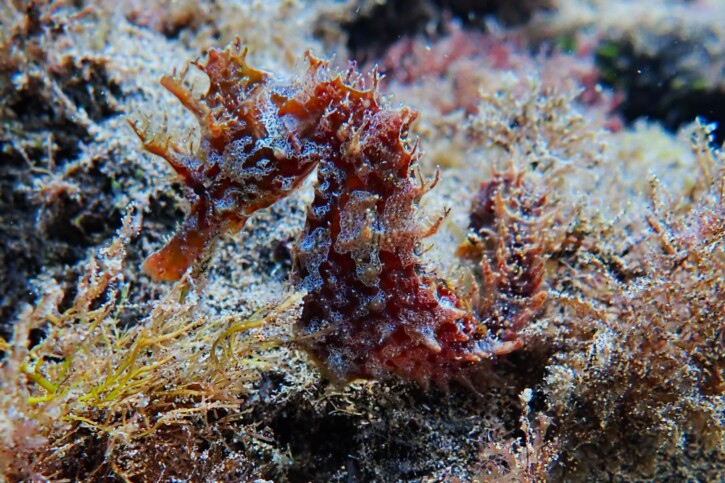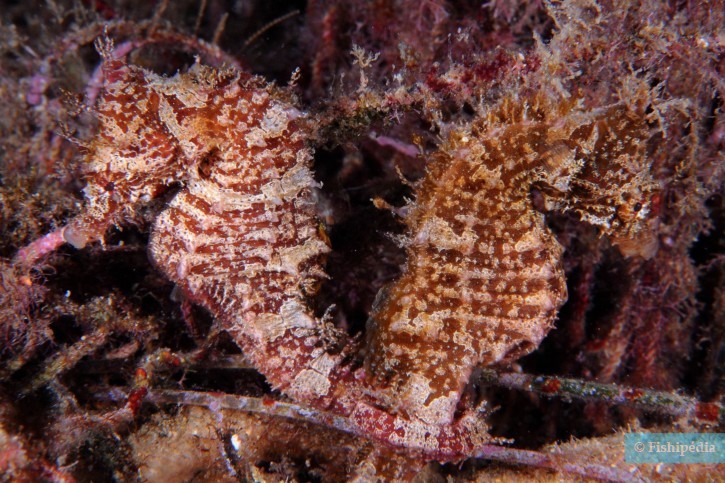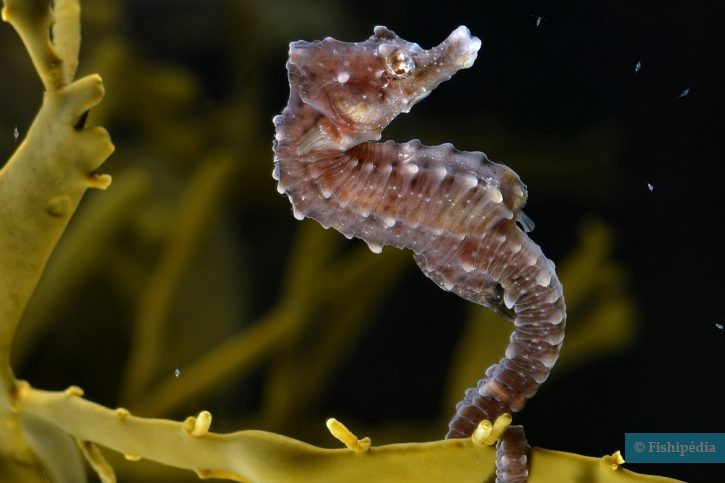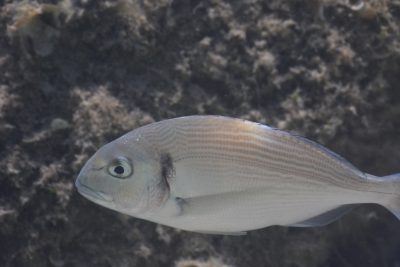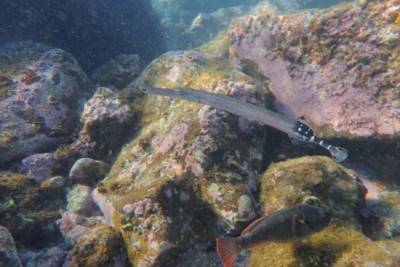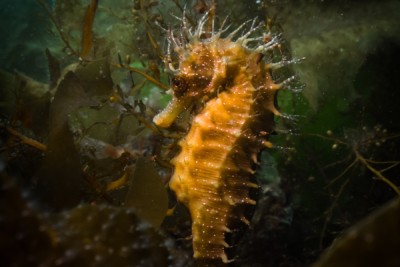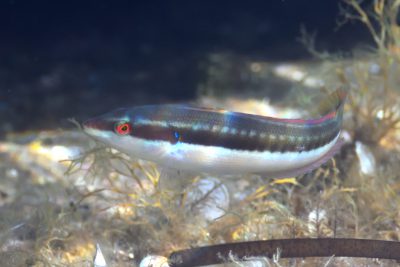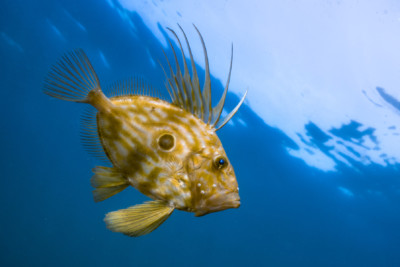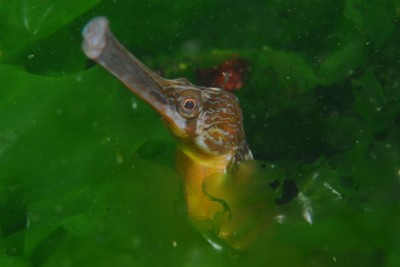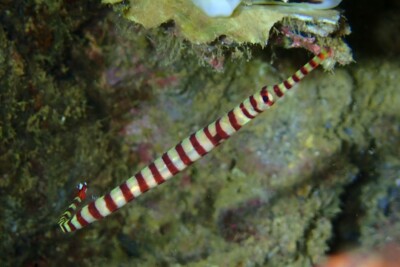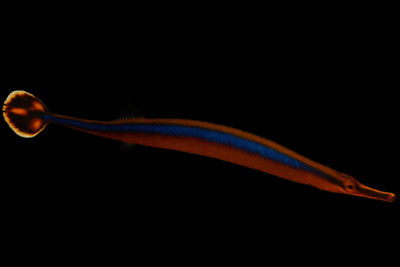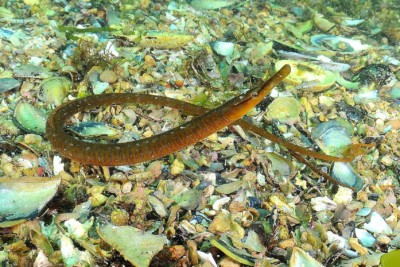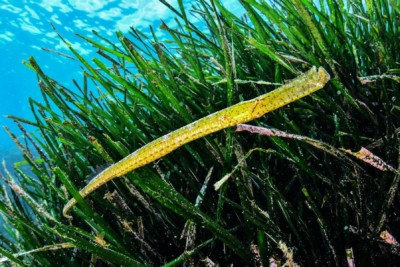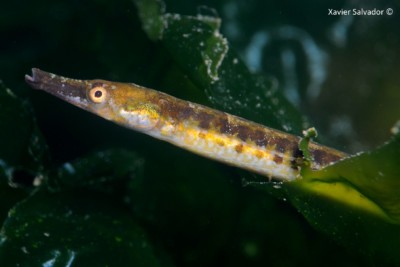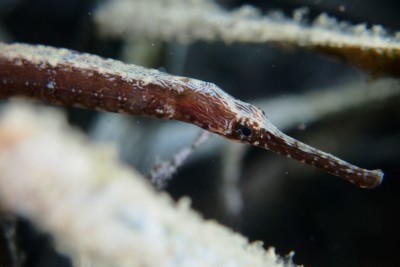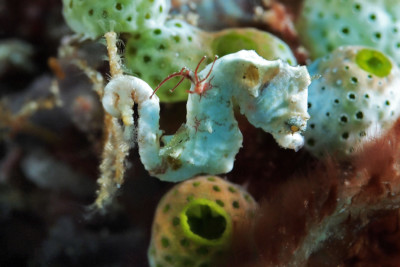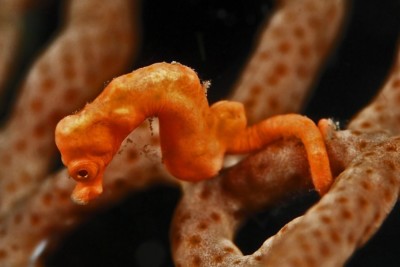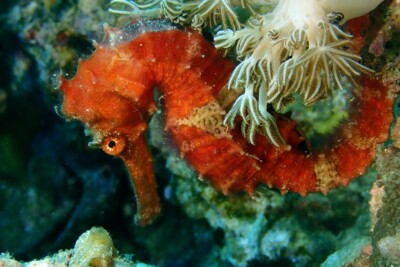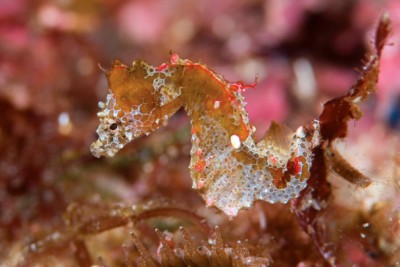short-snouted seahorse
| Family | Syngnathidae |
|---|---|
| Genus | Hippocampus |
| IUCN category (World) | DD |
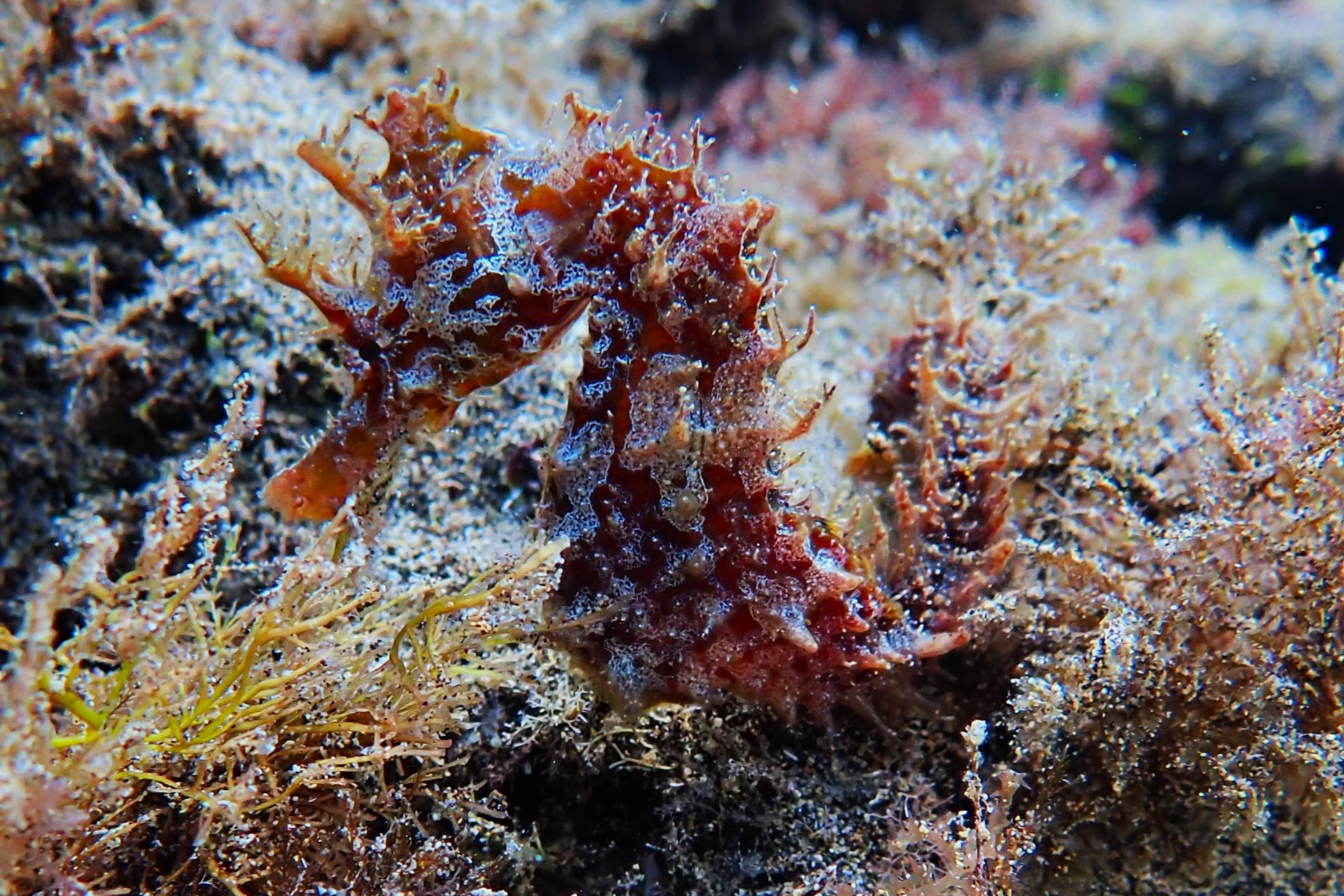

Introduction
The short-snouted seahorse is the common seahorse of the eastern Atlantic Ocean and the Mediterranean Sea. It is found from the British Isles to the Gulf of Guinea. It is listed in the Canaries, the Azores, and throughout the Mediterranean.
To date, it is listed in Appendix II of CITES. Although populations show fairly strong resilience, it is a species particularly sensitive to pressures from human activities. In several tropical areas, populations of some of its relatives have disappeared. Individuals were captured to be dried as souvenirs, used in traditional Southeast Asian medicine, or exported for the aquarium trade.
It seems to be rare in the Mediterranean today, except in brackish lakes and certain lagoons.
Who is it?
Morphology
-
Type
-
Average size7 cm
-
Maximum size13 cm
-
Type
-
Average size7 cm
-
Maximum size13 cm
How to recognize This fish ?
This seahorse has no dorsal spine. As an adult, it measures between 7 and 13 cm, sometimes 15 cm according to sources. Its small snout slightly curved upwards does not exceed one-third of the head. This feature is one of the keys to identifying it.
The coloration varies depending on the environment. It can be uniformly brown to yellow, orange, purple, black, or green. Some individuals living on sponges may have a mixture of colors ranging from brown to rust. It may have tiny white dots but these do not merge into thick horizontal lines unlike its closest cousin, H. guttulatus.
Sexual dimorphism
Females are slimmer. When pregnant, a more rounded abdomen can be observed.
Behaviour & Life cycle
-
dietplanctophage
-
Sociabilityliving as a couple or alone
-
territorialNo
-
Way of livingdiurnal
This seahorse inhabits dense vegetation habitats. It is found in seagrass meadows and algae-rich areas. Sometimes, it can also cling to sponges. Its clumsy swim makes it often found in calm and sheltered areas.
It perfectly mimics the green or yellow coloration of typical vegetation in the Eastern Atlantic and the Mediterranean Sea. This feature allows it to avoid detection by predators and to surprise marine microorganisms that it sucks up with its snout.
It is generally a solitary fish that limits its movements. In general, it avoids leaving planted areas. In winter, it moves to deeper areas and returns in the early summer. Dispersal is significant, probably due to its clumsy swim. During storms, adults cling to debris and are transported over long distances.
This fish lives between 3 and 5 years.
Reproduction
-
Reproductionovovivipare
This species is monogamous and ovoviviparous. The female deposits the eggs in the male's pouch. During the mating season, mature males and females change color and become more vibrant, especially during courtship and mating. Newly hatched young are believed to have a planktonic stage that lasts at least eight weeks.
Harmless species
This species does not represent any particular threats to humans when encountered in its natural environment.
Origin and distribution
What is its habitat?
Natural environment characteristics
-
Temperature24 - 28 °C
-
Depth1 - 60 m
-
FlowSlow and Stagnant
Biotope presentation
The species is found in seagrass beds and algae in rocky areas, as well as in vegetation-rich areas of brackish ponds.
Species of the same biotope
Fishkeeping
Not recommended
We do not recommend keeping this species in an aquarium. It has unpredictable needs which, if not met, generate significant stress, potentially leading to a shorter life expectancy, an interruption of its growth or the development of pathogens.
To go further
Sources & Contributions
Participation & Validation
The Fishipedia team and specialist contributors are committed to providing high-quality content. However, although the information comes from scientific sources or testimonials from specialists, the cards may contain inaccuracies.

Benoit Chartrer
Translation
Translation done with the valuable contribution of our translators, who make this information available to a wider audience. We sincerely thank them for their commitment.
Scientific partners
Tags
Species of the same family
Same genus
Species of the same biotope
